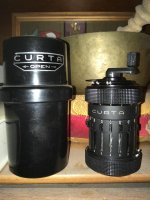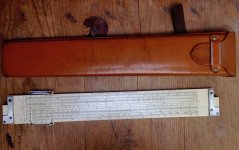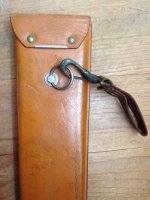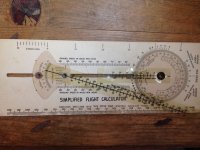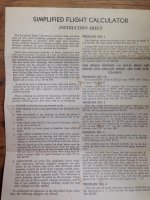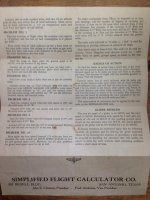I've wondered that too.....
I still use a slide rule.
Have a aluminum Pickett in the truck for gas mileage calculations, memories and causing confusion.
Late 70s the University Bookstore at University of Arkansas was having a CLEARANCE SALE selling slide rules for $5.00.
Three of us older fogies ran over and bought some extra POST VERSA LOGS - just for the memories.
Do any of the Asians still use the abacus ?
Bekeart
Watching somebody really good with an abacus is amazing. I hope that it isn't a lost art.
There was a Monty PYthon sketch where aliens were turning English people into Scotsmen because it was the only way to win the tennis championship. "After all, the Scots canna play the tennis to save their very lives."
Switch to a Scottish men's wear shop.
American Voice Then suddenly a clue turned up in Scotland. Mr Angus Podgorny, owner of a Dunbar menswear shop, received an order for 48,000,000 kilts from the planet Skyron in the Galaxy of Andromeda.
Mix to interior of highland menswear shop. An elderly Scottish couple are poring over a letter which they have on the counter. Oil lamps etc.
Mrs Podgorny Angus how are y'going to get 48,000,000 kilts into the van?
Angus I'll have t'do it in two goes.
Mrs Podgorny D'you not ken that the Galaxy of Andromeda is two million, two hundred thousand light years away?
Angus Is that so?
Mrs Podgorny Aye ... and you've never been further than Berwick-on-Tweed...
Angus Aye ... but think o' the money dear ... £18.10.0d a kilt ...
(He clicks an abacus about three times)
£900,000,000 - and that's without sporrans!
Mrs Podgorny Aye ... I think you ought not to go, Angus.
Angus (with visionary look in his eyes) Aye ... we'd be able to afford writing paper with our names on it... We'd be able to buy that extension to the toilet...
Anyway, I think the idea is that the Scot's can't play tennis, but they can sure count money.



OK, TO STAY ON TOPIC:
I have/had a K&E slide rule, but it was aluminum and not a piece of art like that one. It had a long black leather holster that all of the tech students wore on their belts around campus. Later, when I worked at the VA hospital I had my name badge on a pocket protector full of pens/pencils I used. That way when I came in, I'd just slap in my pocket protector with the badge already on it, No one had started using 'Nerd' or 'geek' much, so I was pretty innocent.
In fact I had some old well made drafting instruments around, too.
I took the last required class of slide rule, but NOBODY could afford the first calculators. Until a guy bought one that could add, subtract multiply and divide. And we thought that was the greatest thing since sliced bread. By the next year calculators were more affordable and they dropped the slide rule requirement.
When I got my first 'real' job' one of the engineer got a TI-59!!!!! (with the magnetic strip program reader) I mean the Rocket Age was really on it's way. Actually, many of my professors were laid off NASA engineers. It was that time in the 70's.

